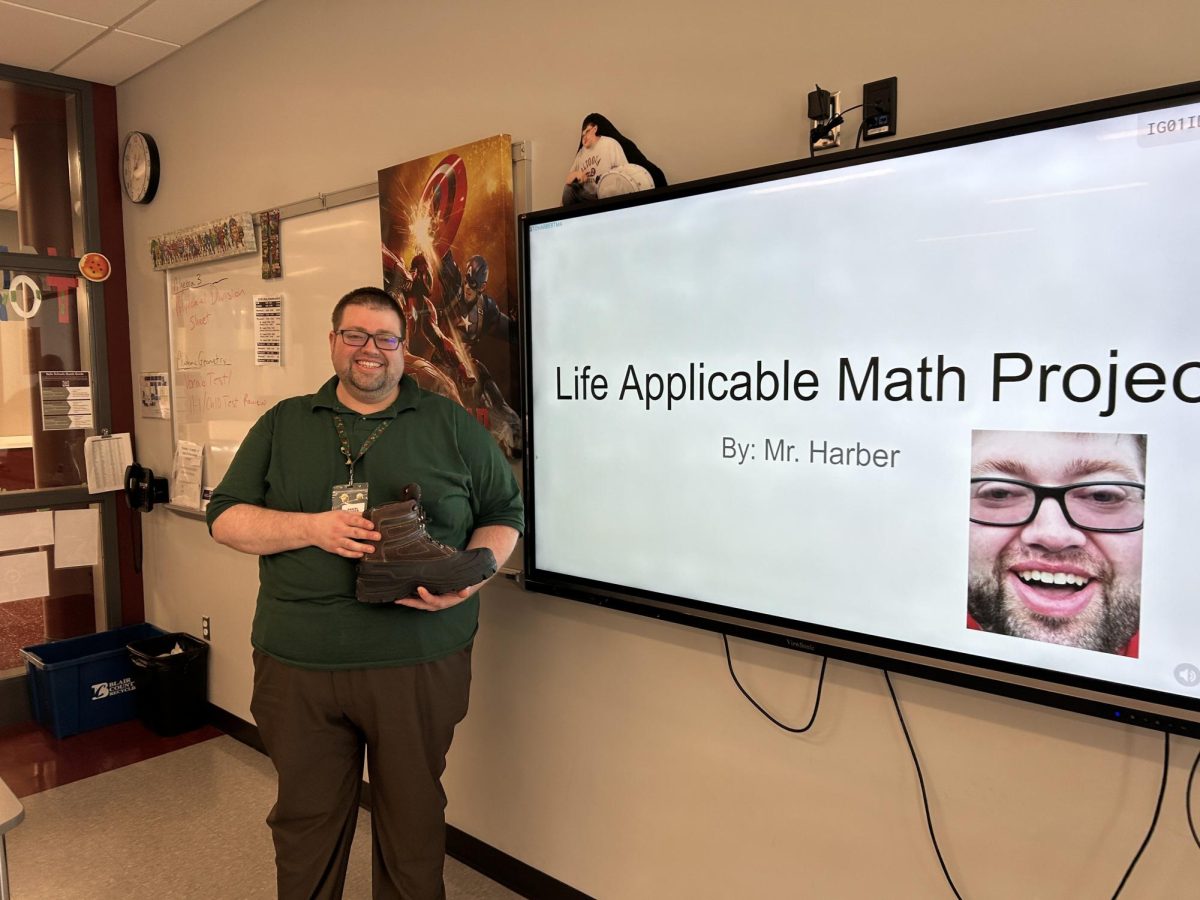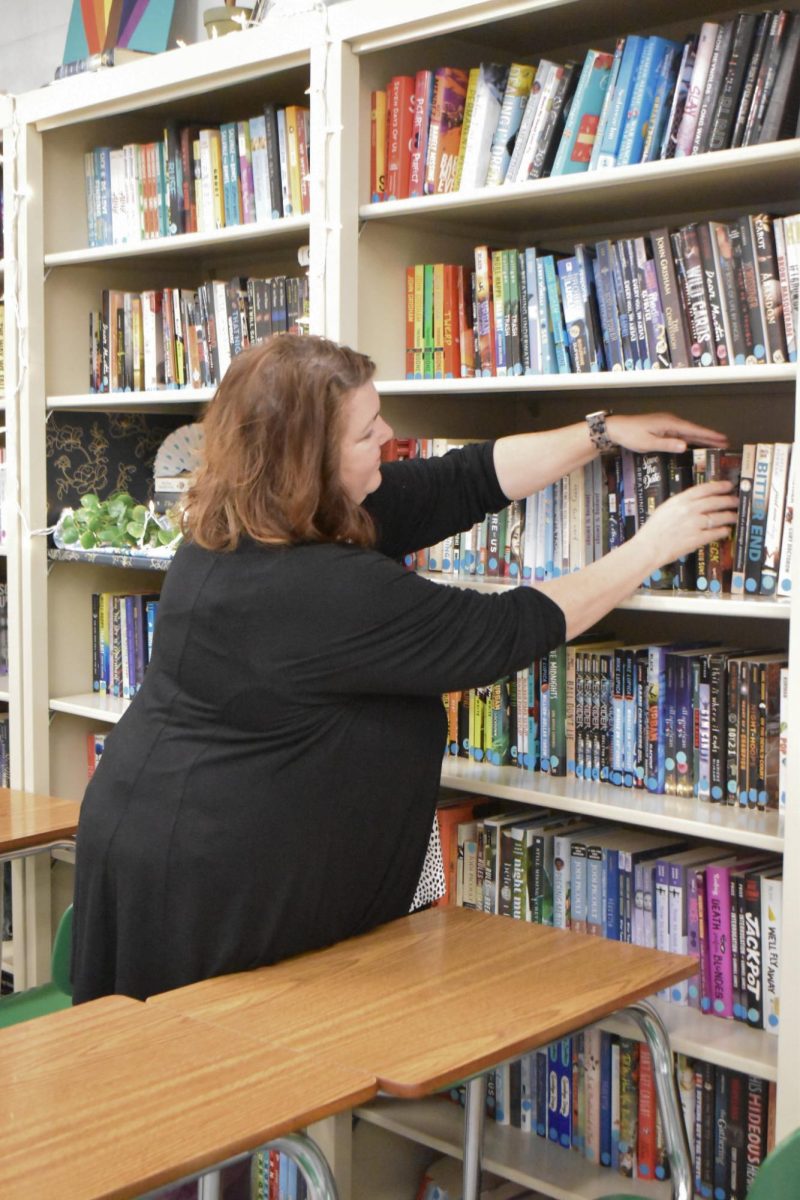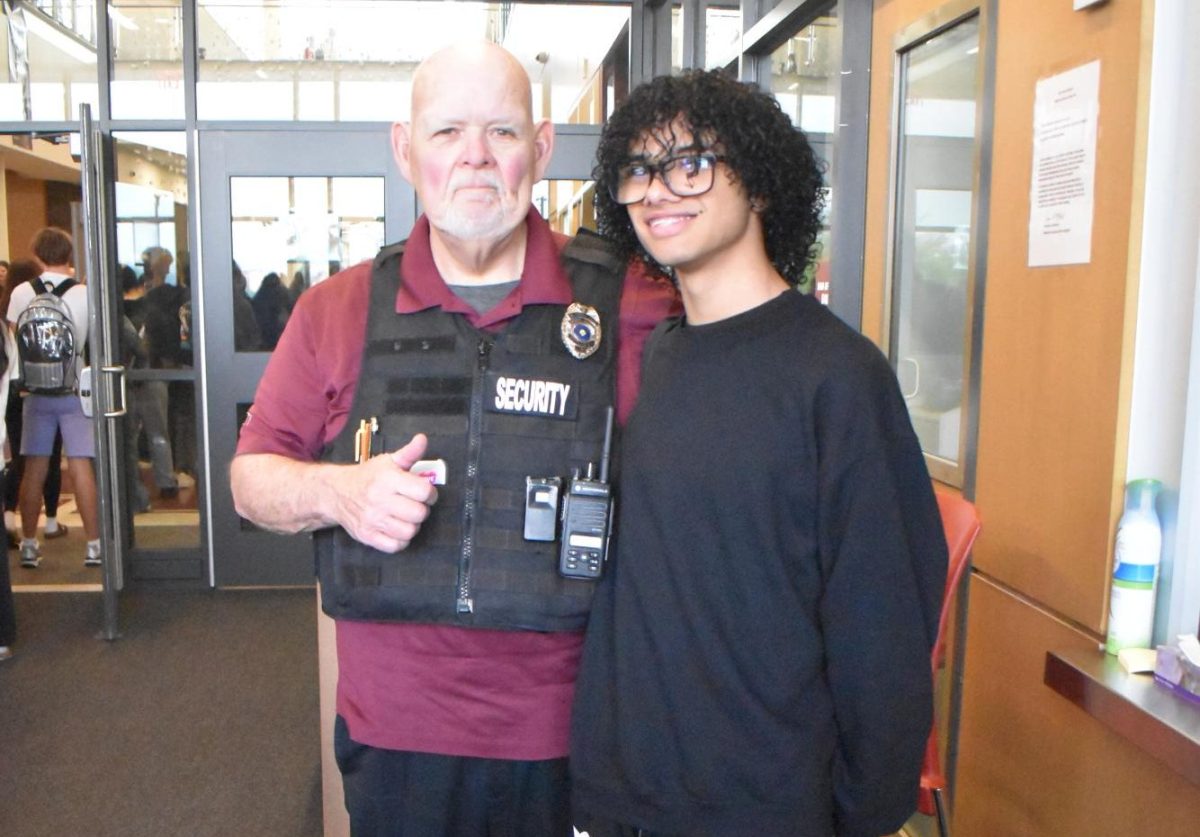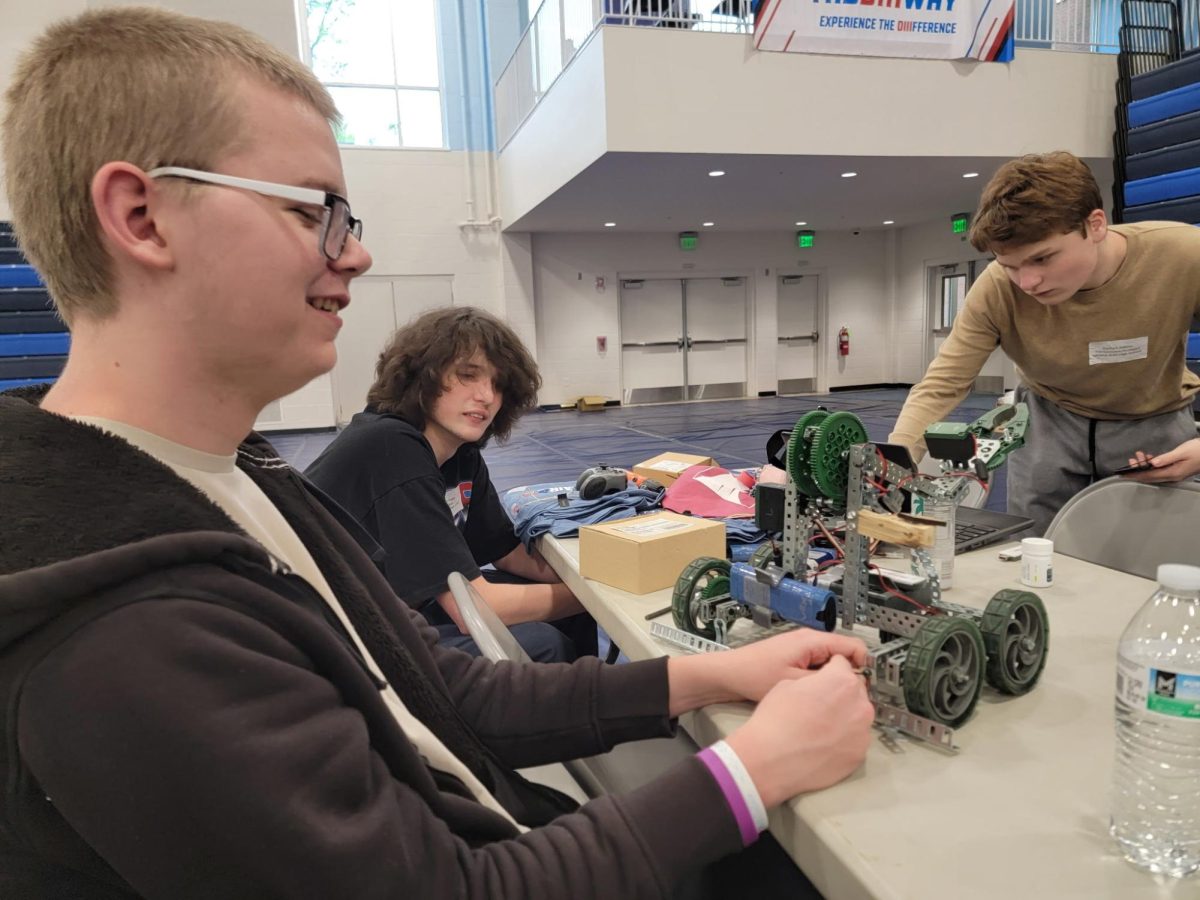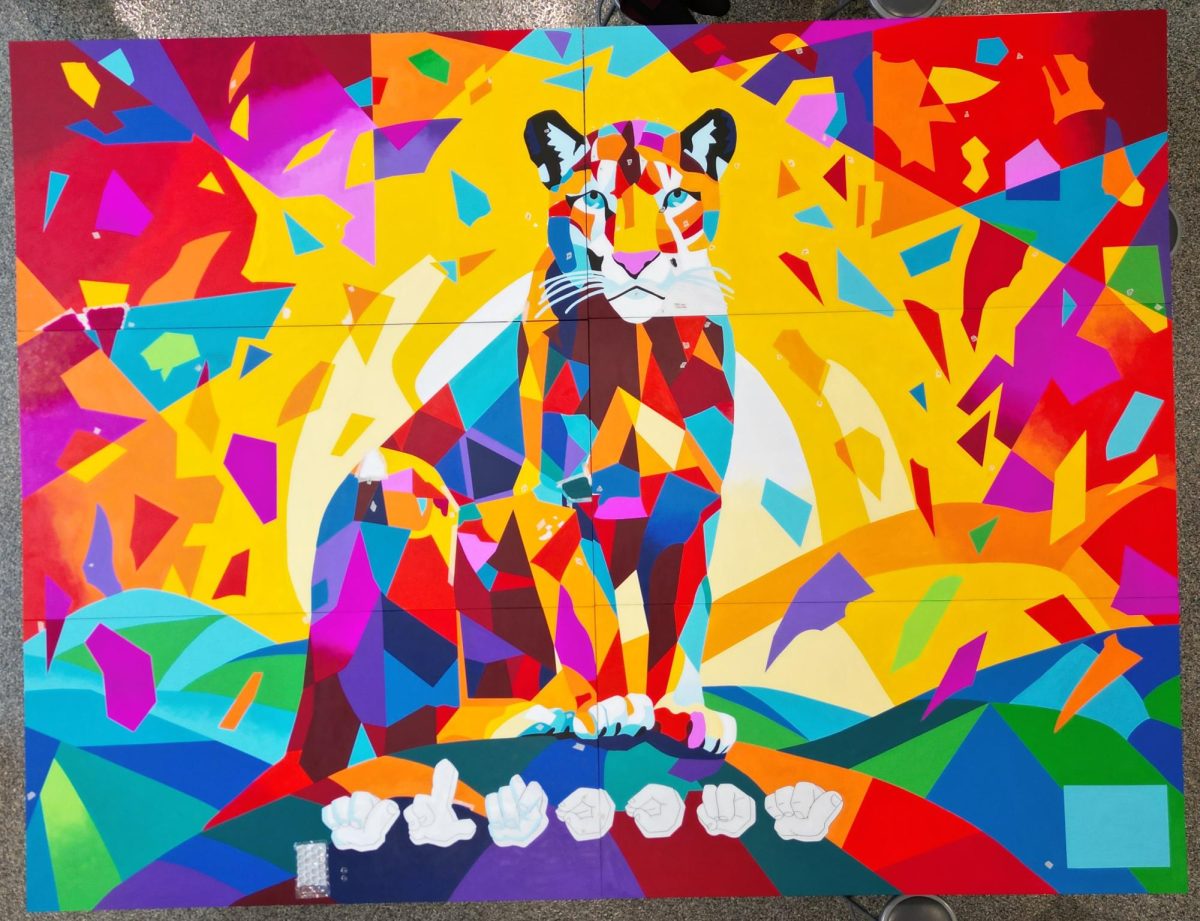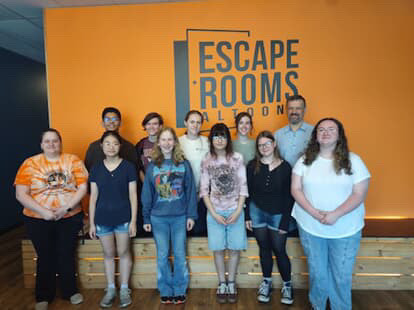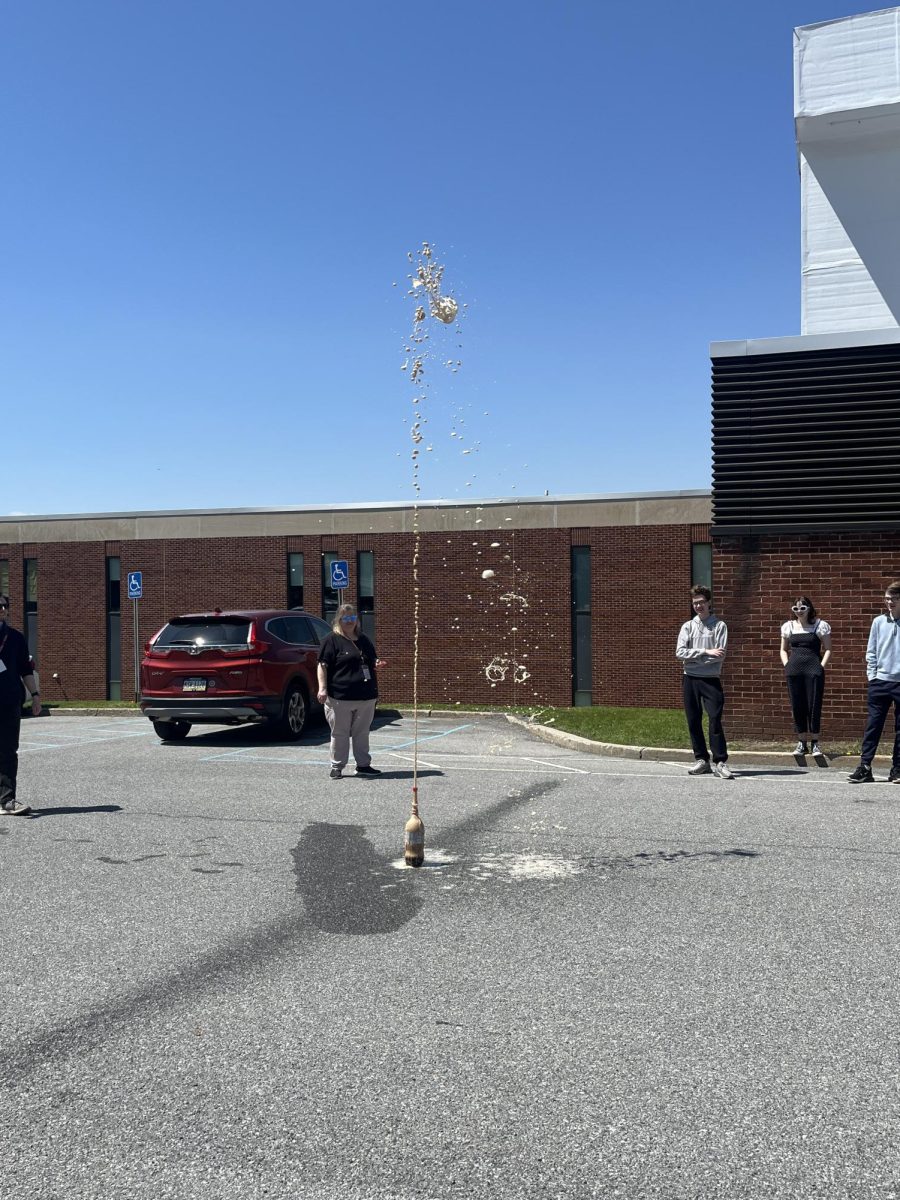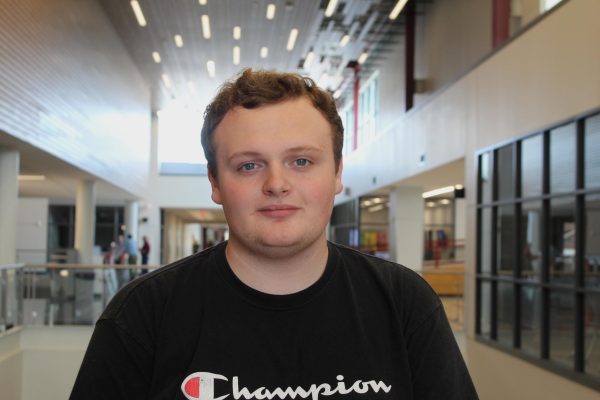Throughout the current school year, math teacher Daniel Harber’s Algebra III seniors have been diving into a class project designed to connect education to real-world applications. Dubbed the “Life Application Math Project,” the assignment encourages students to explore the role math will play in their future careers and life goals, helping them realize the math they’ve learned will continue to be relevant in whatever they choose to pursue.
“My seniors are expressing their careers or what they want to do later in life but also figuring out what math they’re still going to need for that career or to get there,” Harber said. “That way, they realize that math is still going to be important in their life because a lot of people get out of school after having a bad experience with math, but math is everywhere.”
The project requires students to choose a career they’re interested in, research how math plays a role in that field, and then present their findings through a written paper and a five-minute presentation.
“It’s not supposed to be a stressful thing,” Harber said. “It’s supposed to be something that they’re just kind of showcasing what they want to do with their life, and what’s important to them with their career choice, but also realizing that some academics are still going to be needed later on.”
Harber explained the project serves as a reminder for students that the math they’ve been learning will play a role in their future, even if it isn’t always immediately obvious.
“You’re not going to need to know how to graph a log or something like that at times, but you’re still just going to need to know those critical thinking skills, and just being able to do different mathematical problems, whether it’s just basic arithmetic or solving for some type of variable that you might not actually use algebra for,” Harber said.
Senior Crystal Lang, who chose to focus on interior design for her project, was surprised by how much math is involved in her field.
“I’ve written a paper on what interior designing is about and what math can be involved in it,” Lang said. “Then, I made a presentation slideshow of the key elements of what math topics and concepts are used in interior designing. It has been eye-opening because I didn’t realize how much math is involved in something that seems so simple like just putting furniture together in a room and creating a color concept in a room. There’s so many more layers to it that I didn’t realize were there, and this really helped open my eyes to that.”
Lang admitted when she first heard about the project she wasn’t entirely enthusiastic.
“I feel like, don’t judge it by it sounding like it’s just a lame old project. It actually does help in deciding what you want to do, because I think that’s the thing that people don’t really think about when you’re close to graduating—what on earth are you going to do right after graduation? And this can really help figure out what exactly you will do in a career, ” Lang said.
Similarly, senior Abigail Rudy found the project to be a valuable exercise in understanding how math applies to her future career in business.
“I am talking about business and how I’m going to use it in the future and how it’s math related,” Rudy said. “It helps me realize that math is actually important when looking into your future and any future goals or any careers, and how, even though people don’t like math, it is important in your daily life.”
Rudy also shared that the project encouraged her to think more deeply about her future and her personal goals.
“It’s best to just make it all about you,” Rudy said. “Because in the end, it is all about you and how your future career will shape the kind of person you will become in the future.”
For Harber, the Life Application Math Project is a way to show students the math skills they’ve been developing in high school will be valuable tools in the real world, even if they’re not always directly applied in their chosen careers.
“What I want them to realize is that at some point, the math they’ve learned through their years of public education is still going to be needed,” Harber said. “It’s about teaching them the skills to think critically and problem-solve. That’s what’s going to help them, whether they’re solving for variables in a business equation or figuring out the measurements for a room in interior design.”
While some students initially felt uncertain about how math could be applied to their future careers, the project has helped many of them understand that math isn’t just a subject to get through—it’s a lifelong skill that will continue to serve them in ways they hadn’t expected.
“They might not use the math exactly as we do in class, but they’ll use those thinking skills and those problem-solving techniques,” Harber said. “And that’s the takeaway—math isn’t just something you forget after graduation. It’s something you carry with you into the future.”
For students like Lang and Rudy, the project has provided a fresh perspective on their future careers and how math plays a role in achieving their goals. By tying math to their aspirations, they’ve come to appreciate its relevance in their lives, helping them prepare for what comes after high school.
“This project has really helped me realize that no matter what career path you choose, math is always going to be part of it,” Lang said.


